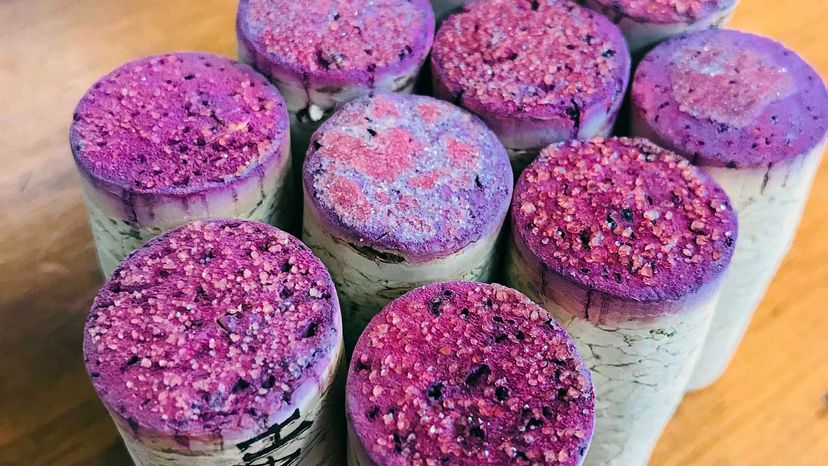 “Are these tiny crystals known as ‘wine diamonds’ the sign of a good or bad wine? Harmony Vineyard
“Are these tiny crystals known as ‘wine diamonds’ the sign of a good or bad wine? Harmony Vineyard
Have you ever ended up with tiny crystals sprouting out of your wine cork or settling at the bottom of your wine bottle? Don’t worry. They don’t indicate that your wine is spoiled. Quite the contrary, in fact. Those harmless, tasteless jewels are called "wine diamonds," and not because of their crystalline looks.
Wine diamonds are considered a sign of quality, at least in the eyes of sommeliers and wine makers who say their presence indicates that a wine hasn’t been over-processed.
Wine diamonds aren’t diamonds, of course. They’re bits of potassium bitartrate — also referred to as potassium hydrogen tartrate or tartaric acid — and are a byproduct of winemaking. Wine diamonds form during the fermentation process in either the bottles or in winery tanks when wine is stored at temperatures below 50 degrees Fahrenheit (10 degrees Celsius).
Wine diamonds are not uncommon, either. "Tartrate crystals are as natural to wine as seeds are to a watermelon," Master of Wine and Master Sommelier Ronn Wiegand said in a statement for California’s Jordan Winery.
The crystals can form in either red or white wine, but they are most often seen in white wines. That’s because white wines contain higher levels of tartaric acid, are clearer and are usually held at cooler temperatures. Also, red wines usually undergo a longer barrel-aging process that allows more time for the crystals to naturally fall to the bottom of the barrels.
Some winemakers use a process called cold stabilization to reduce the amount of wine diamonds in bottles. This involves chilling the wine while it sits in the fermentation tanks. Cold stabilization encourages the formation of crystals so they can be filtered out before bottling. But, it’s not a surefire process as the crystals can still form in bottles if they are stored at cooler temperatures.
If you pop a bottle of wine and see little crystals on the cork or notice them settled at the bottom of your bottle, don’t worry. They’re harmless and don’t impact the wine’s flavor. But if you find their appearance unappetizing or cringe when a few end up in your mouth as you sip the last few drops from your glass, there are things you can do to prevent them from forming. Store your wine at temperatures between 55 and 60 degrees Fahrenheit (12.7 to 15.5 degrees Celsius) and fully chill them just before serving, if needed.
If you still find the crystals at the bottom of the bottle (it can happen) and would rather not risk them getting into your glass, you can either pour the wine through cheesecloth or decant the last quarter-bottle of wine.
Now That’s Interesting
Wine diamonds are actually the crude version of cream of tartar, an ingredient often used in baking for leavening. One of the most recognized uses for cream of tartar is helping whipped egg whites hold their peaks.













































